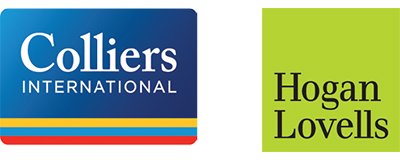MIPIM 2019: Amazon and Apple be warned: Oslo doesn’t need you or want you, according to the chief executive of the Oslo Metropolitan Area, Erling Fossen.
In fact, he thinks big companies such as these are actually “ruining cities”.
Speaking at EG’s MIPIM panel session “The Power of Big Brands in Big Cities”, Fossen described Apple’s new headquarters on the outskirts of Cupertino, California, as “a combination of a spaceship and a doughnut” that was “sapping the energy” out of the city.
“Why do you need a large headquarters like that?” he asked.
“If you look at what happened in New York, the big brands have too much power,” he said, referring to the debacle over Amazon’s former $2.5bn plans to establish its second headquarters in Long Island City, Queens.
“Large companies tend to destroy cities. They must express their power through large buildings that are not suitable for the city.”
The city as a brand
Fossen pointed out that Oslo itself was the brand, adding that, while the city is not good at attracting talent, “we are good at growing and keeping talented people”.
“Our aim is to grow an ecosystem of start-ups and nurture them, instead of attracting a new Amazon or a new Apple,” he added.
However, Richard Divall, EMEA head of cross-border capital markets at Colliers International, argued that cities needed these big brands, adding that it was “very important for cities to keep up with what millennials want”.
But Peter Riley, head of capital solutions at M&G Investments, agreed with Fossen that city brands were important, as did Franck Margain, chairman of Paris Region Enterprises.
Riley added that having a good city brand was particularly useful for attracting investors. “From an investment perspective, you look at the DNA of the city – the cultural heritage, the education provision – and facets such as affordability for the workforce and connectivity. They all come together to create a brand.
“[Investors look at] what the drivers of the city brands are, and ask if the city is living the branding.”
Divall agreed, offering up Berlin as attractive from an investor’s perspective as it was one of the most affordable cities in Europe.
He added that young people who can’t afford to live in Munich these days are moving to Berlin. This, in turn, is attracting occupiers, as they will want to be where the next generation of talent is.
Affordability is the reason a large amount of affordable housing is being built in the Paris region around good public transport connections, in order for younger people to live in communities, Margain said.
For Jackie Newstead, global head of real estate at Hogan Lovells, a key driver of growth was for cities as brands – and particular districts within those cities that are identifiable in their own right, such as King’s Cross in London – and occupiers with strong branding to mix together to create an attractive prospect to bring in other occupiers and investment.
She added that most successful cities were not only attractive to office-based businesses, but were also draws for tourists that in turn bring in businesses in the form of hotels and other leisure occupiers.
On the panel
- Richard Divall, EMEA head of cross-border capital markets, Colliers International
- Erling Fossen, CEO, Oslo Metropolitan Area
- Franck Margain, chairman, Paris Region Enterprises
- Jackie Newstead, global head of real estate, Hogan Lovells
- Peter Riley, head of capital solutions, M&G Investments
- Chaired by Emily Wright, head of special projects and tech editor, EG
In partnership with
EG is proud to continue its role as official media partner at the world’s leading property market event. With a focus on promoting UK investment through a global lens, click here to follow the latest news, read EG’s new investor guides and keep up to date with social media.
To send feedback, e-mail louise.dransfield@egi.co.uk or tweet @DransfieldL or @estatesgazette












